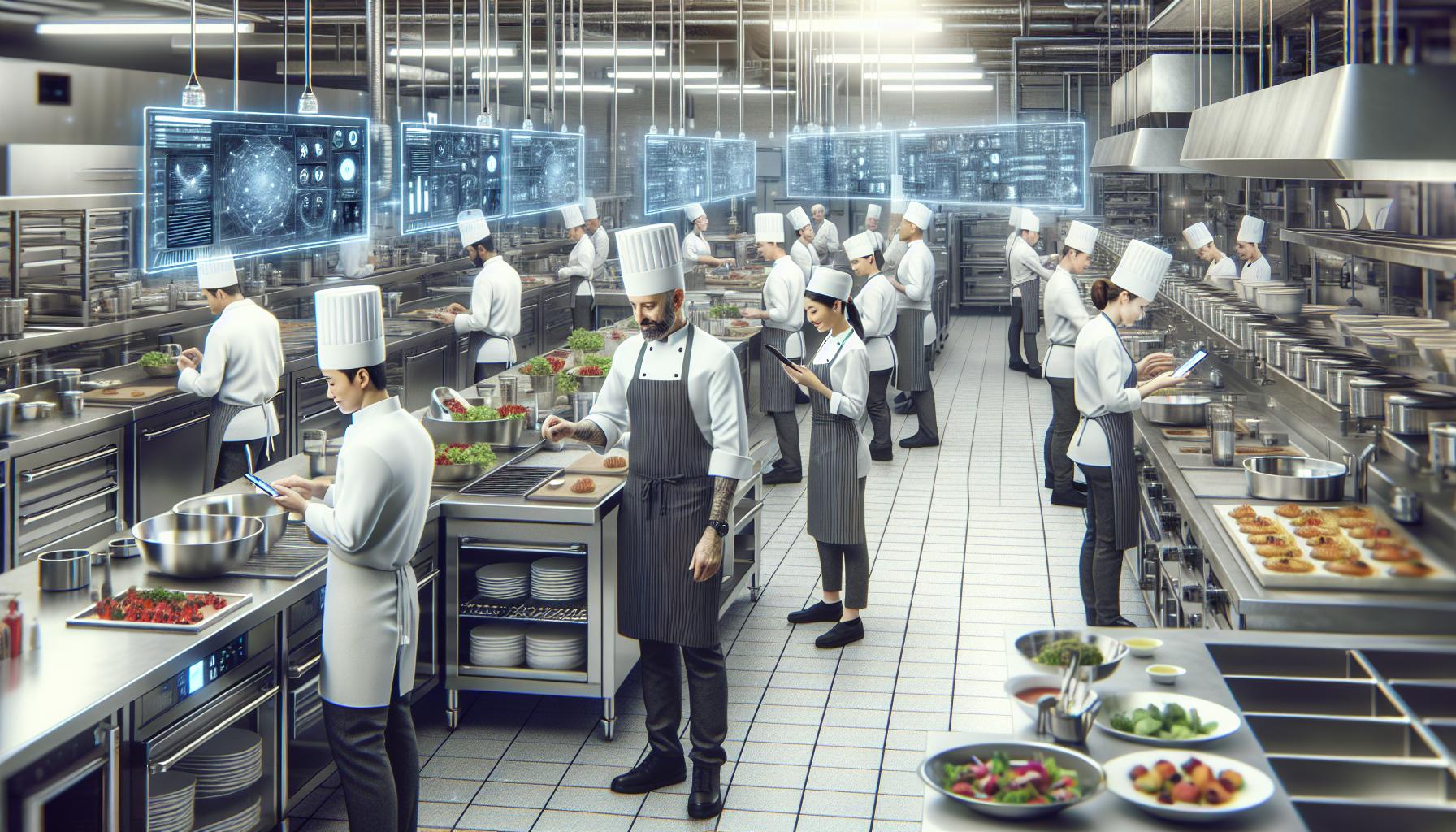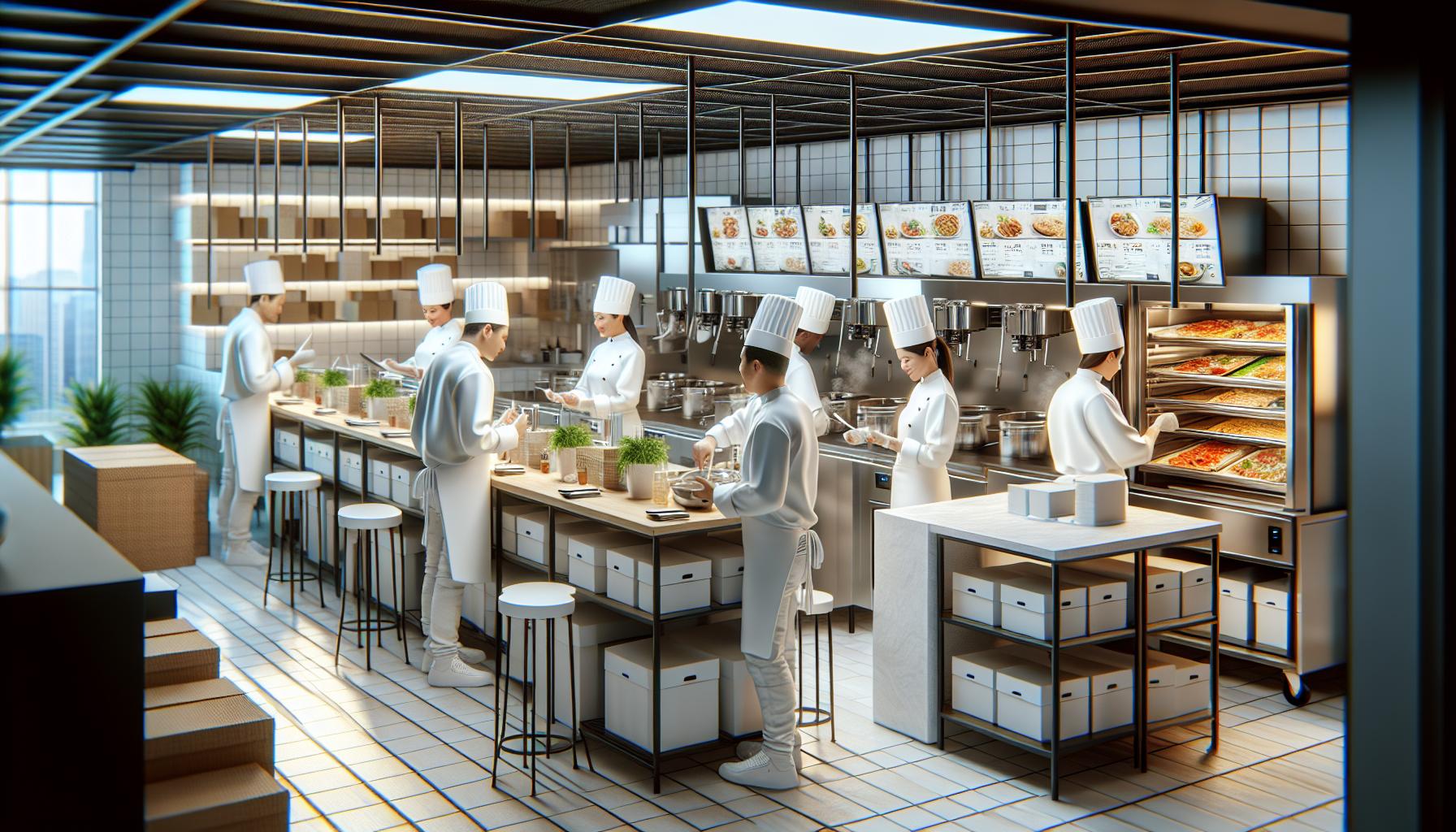The food service industry is evolving faster than a chef’s knife through butter and staying ahead of these trends isn’t just smart – it’s essential for survival. From ghost kitchens to AI-powered ordering systems modern restaurants are embracing technology like never before.
Today’s diners aren’t just looking for a meal they’re craving experiences that tantalize their taste buds while aligning with their values. Sustainability zero-waste practices and plant-based options have moved from niche requests to mainstream demands. Restaurant owners who’ve adapted to these changes are seeing their businesses thrive while those who resist risk being left with nothing but empty tables and declining profits.
Food Service Trends
Food Service Trends operations transformed from simple kitchen-to-table setups into sophisticated digital ecosystems over the past decade. This shift redefined customer expectations and operational standards across the industry.
From Traditional to Digital Dining
Digital technology revolutionized traditional dining experiences through integrated point-of-sale systems, mobile ordering platforms and contactless payment solutions. Restaurant operators now leverage cloud-based management systems to track inventory, analyze sales data and optimize menu performance in real-time. QR code menus replaced paper versions in 75% of full-service restaurants by 2022, while mobile ordering apps process over 130 million orders monthly across major chains.
| Digital Adoption Metrics | Percentage/Volume |
|---|---|
| QR Menu Implementation | 75% of restaurants |
| Monthly Mobile Orders | 130M+ orders |
| Digital Payment Usage | 82% of diners |
Smart kitchen displays coordinate Food Service Trends preparation timing between stations, while AI-powered chatbots handle customer service inquiries through social media channels. Restaurant operators integrate delivery platforms like DoorDash, Uber Eats and Grubhub directly into their POS systems, creating seamless order fulfillment processes. Digital loyalty programs track customer preferences and automate personalized marketing campaigns based on dining history.
Technology Transforming Restaurant Operations

Digital innovations revolutionize restaurant operations through automated systems and data-driven solutions. Modern restaurants integrate advanced technologies to streamline processes and enhance customer experiences across every touchpoint.
Mobile Ordering and Payment Solutions
Mobile ordering apps accelerate service delivery by 32% compared to traditional counter ordering. Digital payment platforms process transactions 3x faster than cash payments, reducing customer wait times from 4 minutes to 90 seconds. Restaurant chains implementing mobile solutions report a 28% increase in average order value through customization options and upsell prompts. QR code menus enable instant updates to pricing and availability while reducing printing costs by $800 annually for mid-sized restaurants. Digital wallets integration increases payment security through encryption protocols and reduces processing fees by 1.2% per transaction.
AI-Powered Kitchen Management
AI algorithms optimize kitchen workflows by analyzing real-time data from connected devices and historical patterns. Smart kitchen displays reduce order errors by 85% while increasing preparation speed by 23% through automated task prioritization. Machine learning systems predict ingredient usage with 94% accuracy, reducing food waste by 35% and inventory costs by $12,000 annually. Automated inventory management tracks stock levels across 1,000+ ingredients and sends alerts when supplies reach predetermined thresholds. Temperature monitoring sensors maintain food safety standards by continuously tracking 15 critical control points throughout storage and cooking areas.
Sustainability in Food Service

Sustainable practices in Food Service Trends operations create significant environmental impact while meeting consumer demand for eco-conscious dining. Modern restaurants integrate green initiatives throughout their operations to reduce waste, conserve resources and minimize their carbon footprint.
Zero-Waste Initiatives
Food service establishments implement comprehensive zero-waste programs that minimize environmental impact through strategic planning. Restaurant kitchens reduce food waste by 76% through AI-powered inventory management systems that track ingredient usage patterns. Composting programs convert 85% of organic waste into nutrient-rich soil for local farms. Strategic portion control measures combined with data analytics decrease plate waste by 45%. Digital menu boards enable real-time updates to prevent overproduction of menu items. Food recovery partnerships with local shelters redistribute 250,000 pounds of unused ingredients annually. Smart storage solutions monitor temperature fluctuations to extend ingredient shelf life by 40%.
Eco-Friendly Packaging Solutions
Restaurants adopt sustainable packaging alternatives that reduce environmental impact while maintaining food quality standards. Plant-based containers made from bamboo, sugarcane and cornstarch decompose within 180 days compared to 500 years for traditional plastics. Reusable container programs incentivize customers with loyalty points, resulting in 65% participation rates. Smart packaging with QR codes provides ingredient transparency while eliminating paper waste. Biodegradable takeout containers made from recycled materials reduce landfill waste by 12,000 tons annually. Food Service Trends providers partner with packaging manufacturers to develop containers using 60% less material without compromising durability.
Ghost Kitchens and Virtual Brands

Ghost kitchens revolutionize Food Service Trends operations through delivery-focused business models operating without traditional dining spaces. Virtual brands expand restaurant reach by creating distinct digital-only concepts from existing kitchen facilities.
The Rise of Delivery-Only Concepts
Digital ordering platforms drive the expansion of ghost kitchens, increasing 235% since 2020. Restaurant operators save 70% on operational costs by eliminating front-of-house expenses with these delivery-only facilities. Major restaurant chains launch virtual brands reaching new customer segments through established delivery apps like DoorDash, Uber Eats and Grubhub.
| Ghost Kitchen Statistics | Data |
|---|---|
| Growth since 2020 | 235% |
| Operational cost savings | 70% |
| Average startup cost reduction | $275,000 |
| Order fulfillment speed increase | 43% |
Cloud kitchens optimize space utilization by housing multiple virtual brands in shared facilities. Digital ordering systems streamline operations integrating directly with delivery platforms. Commercial kitchen spaces transform into multi-concept production hubs serving numerous virtual restaurants simultaneously. Cross-utilization of ingredients between virtual concepts reduces food costs by 25%.
Health-Conscious Menu Adaptations
Modern restaurants prioritize nutritional transparency through digital menu interfaces displaying detailed ingredient lists caloric content. This shift responds to increasing consumer demand for healthier dining options with 82% of diners actively seeking nutritional information when ordering.
Plant-Based and Alternative Proteins
Plant-based proteins occupy 35% of menu space in contemporary restaurants compared to 8% in 2019. Leading chains feature lab-grown meat alternatives from companies like Beyond Meat Impossible Foods which reduce environmental impact by 89% compared to traditional protein sources. Quick-service restaurants report a 47% increase in plant-based burger sales while fine dining establishments integrate mushroom-based proteins into signature dishes. Digital menu systems highlight protein alternatives through specialized filters icons allowing customers to identify plant-forward options instantly. Major restaurant groups incorporate fermented proteins seitan tempeh offering 25 grams of protein per serving while maintaining traditional flavor profiles.
Allergen-Friendly Options
Digital ordering platforms incorporate allergen filters enabling customers to screen menu items for 8 common allergies. Restaurant management systems track ingredient substitutions creating safe meal options for guests with dietary restrictions. Cloud-based menu databases maintain real-time updates on allergen information across multiple locations ensuring consistent safety protocols. Cross-contamination prevention systems in smart kitchens reduce allergen incidents by 94% through automated preparation zone assignments. Restaurant apps display comprehensive ingredient lists allowing customers to customize orders based on specific dietary needs. Food service operators partner with specialized allergen testing services maintaining certifications for gluten-free dairy-free preparation zones.
Personalized Dining Experiences
Modern restaurants leverage customer data to create tailored dining experiences that match individual preferences. Digital systems track ordering patterns, dietary restrictions, and visit frequency to enhance service quality and customer satisfaction.
Data-Driven Customer Service
Restaurant management systems analyze customer behavior patterns to deliver customized service experiences. Digital loyalty programs track dining preferences across 87% of chain restaurants, enabling servers to anticipate guest needs based on previous orders. AI algorithms process historical data to predict peak dining times, allowing restaurants to optimize staffing levels with 92% accuracy. Smart POS systems identify returning customers, displaying their favorite orders, allergies, and special requests automatically. These data insights enable restaurants to generate personalized menu recommendations, resulting in a 34% increase in upsell opportunities. Marketing automation tools segment customers based on dining habits, sending targeted promotions that achieve a 45% higher response rate compared to generic campaigns. Mobile apps collect real-time feedback, allowing restaurants to address service issues promptly and maintain a 96% customer satisfaction rate.
The Food Service Trends industry has entered an era of unprecedented digital transformation and innovation. From AI-powered kitchens to sustainable practices and personalized dining experiences technology continues to reshape how restaurants operate and serve their customers.
Success in today’s food service landscape demands adaptability and a willingness to embrace change. Restaurants that leverage these emerging technologies and trends aren’t just surviving – they’re thriving with increased efficiency reduced costs and enhanced customer satisfaction.
The future of food service is already here and it’s digital sustainable and customer-centric. Those who stay ahead of these trends will find themselves well-positioned to meet evolving consumer expectations and maintain a competitive edge in this dynamic industry.



